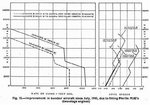syscom3
Pacific Historian
What was the speed differential between a fully Loaded Lanc (typical load out for bombs) and the JU-88 and ME-110, both fully loaded with ammo and fuel. I know the altitude has a lot to do with the speed of all the aircraft, so let's say the Lanc is at 20,000 ft. Let's also say it's summer 1944 so what ever variants were available in those months.
I don't need absolute numbers, just a relative speed rate.
I'm not well versed in this part of the air war (and the aircraft that fought it), which I why I am asking.
I don't need absolute numbers, just a relative speed rate.
I'm not well versed in this part of the air war (and the aircraft that fought it), which I why I am asking.

